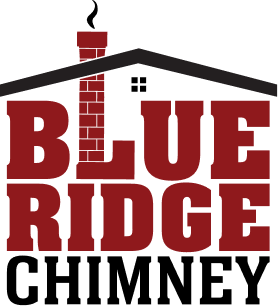Company Blog
Chimney Inspections Made Better with Video Scan Technology
What could make your annual chimney inspection from one of the Chimney Safety Institute of America (CSIA)-certified technicians of Blue Ridge Chimney Service even better and more definitive? Our answer is the Chim-Scan Closed Circuit Internal Evaluation System. Using...
Replace Your Cracked Clay Liner with a Stainless Steel Liner
If you have an older masonry fireplace, your chimney is most likely equipped with a clay tile liner. Even though clay tile chimney liners are durable and well-built, they still deteriorate over time. Over the years, the tiles start to chip and crack, which creates...
Now Is a Great Time for Exterior Masonry Chimney Repairs
Did the freezing temperatures we experienced this past winter cause deterioration to the exterior of your masonry chimney? Winter weather often leads to spalling damage. Masonry materials like bricks and mortar are porous and absorb water. When the temperature falls...
Make A Professional Chimney Sweep Part of Spring Cleaning
Spring is finally here, and that means spring cleaning is on your mind. The arrival of spring is an occasion to rid your home from that dusty winter air, and your fireplace and your chimney should not be left off your spring cleaning list. After using your fireplace...
The Importance of Chimney Codes
Some of our customers are surprised to learn they must have their chimney inspected once a year, and we at Blue Ridge Chimney Service are often asked why annual chimney inspections are so important. Safety is the most essential reason for these yearly inspections....
How A Harsh Winter Can Damage Your Chimney
Commonly seen by our neighbors to the North as well as here in the upper South, spalling occurs when water penetrates a masonry surface, including a brick chimney, and causes chipping and breaking of brickwork or concrete. Freezing temperatures are what causes the...
The Anatomy of Your Masonry Chimney
The anatomy of a masonry chimney consists of many important parts, and each part has a job that is essential to the proper and safe operation of your fireplace and chimney system. Many homeowners are unfamiliar with these parts and their functions, and knowing the...
Why a New EPA-Certified Wood Stove is Better than the Wood Stoves of the Past
Are you using a wood-burning stove that was manufactured before 1988? If so, you may want to think about updating your older heat appliance with a newer EPA-certified model. In 1988, the U.S. Environmental Protection Agency (EPA) started requiring wood stove...
The Importance of a Professional Installation of a Wood-Burning Fireplace Insert
One of the most popular ways to update the look of your fireplace and to convert your old wood-burning fireplace to a cleaner-burning EPA-approved appliance, installing a wood-burning fireplace insert should always be professionally done. Most fireplace inserts are...
The Importance of a Chimney Cap
In order to function correctly and safely, your chimney and venting system consists of several different necessary components. One of the most important parts of your chimney system, a chimney cap, is needed to protect your chimney from water penetration, animal...
